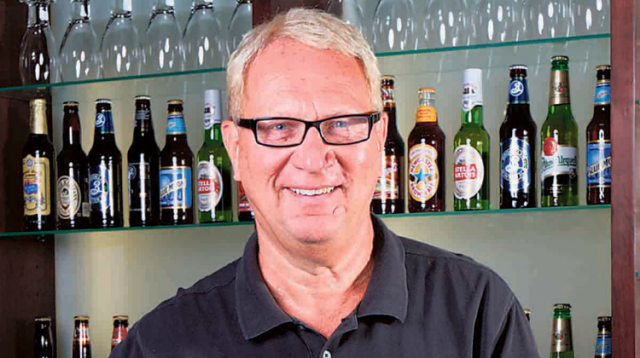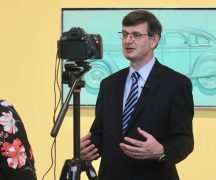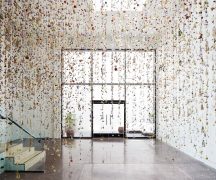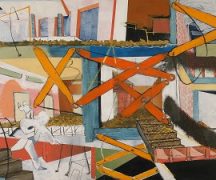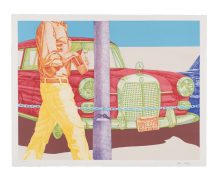From TOLEDO MUSEUM OF ART
Renowned Libbey, Inc. designer and creative director Robert Zollweg will be the 45th Guest Artist Pavilion Project (GAPP) artist in residence at the Toledo Museum of Art (TMA). Zollweg will be in residence from Sept. 18 through Sept. 27 and will give a free artist talk on Thursday, Sept. 26 at 7 p.m. in the GlasSalon. GAPP invites contemporary artists from around the world to create new work in glass and share their process with the public.
Zollweg, who recently retired from Libbey, Inc., will experiment with an artistic approach using sand casting. In sand casting, a positive object makes an impression in the sand mold, which is then filled with molten glass and then cools to create the final product.
“For his GAPP residency, Robert has selected making glass by hand using sand casting, which means his creativity and design won’t be constrained by the commercial glass production process,” said Alan Iwamura, glass studio manager at the Toledo Museum of Art. “He has been making positives this summer to use with the sand molds, and we are looking forward to helping him bring these ideas to life.”
Since its opening in 2006, the Glass Pavilion has uniquely combined its role as the home of one of the world’s great glass collections with its place as a working glass studio born from Toledo roots. As the birthplace of the Studio Glass Movement, Toledo continues to play a pivotal part in today’s contemporary glass community. A large part of that influence comes from TMA’s continued association with many of the most influential and up-and-coming glass artists in the world.
GAPP highlights the unique nature of the Glass Pavilion by encouraging experimentation with glass in innovative ways. Specifically designed to encourage resident artists to utilize or respond to the TMA collection, this program is uniquely situated to serve both the educational mission of TMA and to promote greater dialogue within both the contemporary glass and contemporary art communities.
GAPP artists have the opportunity to create works of art utilizing the outstanding studio facility at the Glass Pavilion, to receive technical assistance from Museum staff, to have uninterrupted time to create artwork, and to benefit from the wide-ranging expertise in various glass-making techniques present within the community.

